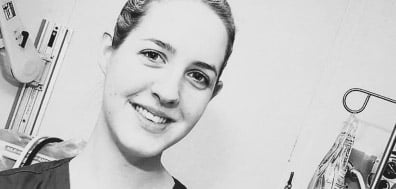These cases reveal a disturbing truth: some killers wear scrubs. Whether driven by a lust for control, attention, or sheer malice, their actions shattered trust in healthcare. While justice was served in court, the scars they left—on victims, families, and the nursing profession—may never fully heal.
1. Lucy Letby – The Neonatal Nightmare

To her colleagues and the anxious parents at the Countess of Chester Hospital, Lucy Letby embodied the ideal neonatal nurse – the kind-faced caregiver who worked tirelessly in the intensive care unit, often staying late to comfort grieving families. Born in 1990 in the quiet cathedral city of Hereford, this unassuming young woman became the most prolific child serial killer in modern British history, her crimes so monstrous they shattered public trust in healthcare institutions.
Nurse Letby’s Killing Ground
Behind Letby’s scrubs and gentle demeanor lurked a calculating predator who turned the neonatal ward into her personal killing ground. During a horrifying 12-month period from June 2015, a sinister pattern emerged – healthy premature babies under Letby’s care would suddenly collapse without medical explanation. Tiny victims, some weighing less than 2 pounds, fell prey to her varied methods: air injected into bloodstreams, stomachs overfilled with milk, or lethal doses of insulin added to feeding bags. Each attack was carefully staged to appear natural, with Letby often being the first to “discover” the emergencies she herself had created.
An institutional failure
The true horror lay not just in her actions, but in the hospital administration’s failure to act despite seven senior doctors raising repeated alarms. While babies kept dying under suspicious circumstances, managers dismissed concerns as “bad luck” and even forced clinicians to apologize to Letby – a catastrophic institutional failure that allowed Britain’s most dangerous killer nurse to continue her murder spree unchecked.
Only after a 2018 police investigation was she arrested. Chillingly, handwritten notes in her home read: “I am evil, I did this.”
Crimes:
- Murdered 7 babies.
- Attempted to murder 6 others.
Sentence:
- Whole-life order (never to be released).
Convicted in August 2023, Letby became only the fourth woman in UK history to receive a whole-life sentence. Her refusal to attend sentencing sparked outrage and calls for legal reform.
2. Beverley Allitt – The Angel of Death

Behind the crisp white uniform and reassuring smile of children’s nurse Beverley Allitt lurked one of Britain’s most depraved killers. The Lincolnshire-born healthcare worker, entrusted with the most fragile young lives at Grantham Hospital’s Ward 4, instead became the stuff of parental nightmares during her 1991 killing spree.
A seemingly devoted nurse turned killer
Allitt’s crimes revealed the terrifying duality of the serial killer – by day, a seemingly devoted nurse; by night, a calculating predator who injected toddlers with lethal doses of insulin or potassium, then basked in the frantic code blue responses she had orchestrated. Her need for control manifested in the most grotesque fashion imaginable – creating medical emergencies in vulnerable children solely to position herself as their heroic savior.
What made Allitt particularly chilling was her selection of victims – babies and young children too weak to resist or report her attacks. While other medical murderers often target adults, Allitt preyed on society’s most innocent, her crimes made possible by the inherent trust we place in pediatric caregivers. The subsequent discovery of her Munchausen syndrome by proxy diagnosis provided only clinical explanation, but no comfort, for the grieving families she left behind.
The case ripped through Britain’s healthcare system, exposing dangerous gaps in hospital oversight that allowed Allitt’s three-month reign of terror before 15-month-old Claire Peck’s death finally triggered proper investigation. Her conviction for four murders and multiple assaults earned her the grim distinction of being one of only three British women serving a whole-life tariff – a fitting sentence for someone who transformed a children’s ward into a house of horrors.
Crimes:
- Murdered 4 children.
- Attempted to murder 3 children.
- Caused grievous bodily harm with intent to a further six.
Sentence:
- 13 life terms (detained indefinitely in psychiatric care).
Allitt was convicted in 1993 and remains in Rampton Secure Psychiatric Hospital, deemed too dangerous for release.
Want to know more? Where is Beverley Allitt now? What are the latest updates on her? Find all the information you need on our in-depth Beverley Allitt profile page.
3. Colin Norris – The Night Shift Nurse Killer Who Targeted the Vulnerable

Colin Norris presented the perfect image of a dedicated nurse – professionally trained in Northern Ireland and working at Leeds hospitals. But behind this façade lurked one of Britain’s most cold-blooded medical predators. The Glasgow-born nurse, who began his career in 2002, harbored a sinister contempt for his elderly patients that would escalate into murder.
Killer Nurse Norris weaponized insulin
Like many killer nurses before him, he was dubbed “The Angel of Death” by British media, Norris’s calculated killings drew inevitable comparisons to Harold Shipman, though his methods differed chillingly. While Shipman used opioids, Norris weaponized insulin – injecting lethal doses into non-diabetic elderly women during night shifts when supervision was minimal. His victims, ranging from 79 to 88 years old, suffered sudden hypoglycemic comas that appeared natural until forensic investigation revealed the truth.
Predicting deaths of those under his care
What made Norris particularly dangerous was his ability to predict deaths before they occurred – a macabre “gift” that later became damning evidence. When 86-year-old Ethel Hall mysteriously collapsed and died under his care, toxicology reports uncovered the horrifying reality: she had been poisoned with insulin she never required. This discovery unraveled Norris’s killing spree, exposing a pattern of unexplained deaths that always coincided with his shifts.
Unlike opportunistic killers, Norris displayed methodical planning, carefully selecting vulnerable patients who wouldn’t arouse suspicion if they deteriorated suddenly. His conviction in 2008 for four murders and one attempted murder revealed healthcare’s worst nightmare – a trusted caregiver who systematically exploited his position to play God with elderly lives.
Norris was convicted in 2008 and remains imprisoned.
Crimes:
- Murdered 4 elderly women.
- Attempted to murder a fifth.
Sentence:
- Life with a 30-year minimum.
4. Victorino Chua – The Poisonous Predator Nurse of Stepping Hill Hospital

Victorino Chua, a Filipino-born nurse who once took the Nightingale Pledge to “do no harm,” instead became one of Britain’s most feared killer nurses. During his tenure at Stockport’s Stepping Hill Hospital between 2011-2012, this seemingly dedicated healthcare worker committed unfathomable betrayals – methodically poisoning IV bags and medications, turning healing tools into instruments of death.
Indiscriminate toxic tampering
Behind his white uniform and professional demeanor lurked a cold-blooded killer. Chua’s random attacks – contaminating hospital supplies rather than targeting specific victims – demonstrated a particularly callous disregard for human life. His toxic tampering claimed two lives and left more than twenty patients fighting for survival in sudden, terrifying medical crises.
The full horror of Chua’s crimes emerged through a chilling piece of evidence: a handwritten confession where he described himself as “an angel turned evil.” This damning note, coupled with his indiscriminate poisoning spree, cemented his place among Britain’s most dangerous medical serial killers – a healthcare worker who weaponized his position to inflict suffering rather than alleviate it.
Unlike other medical murderers who selected victims, Chua’s approach was terrifyingly arbitrary – any patient could have been his next target. This random brutality, combined with his complete lack of remorse, makes his case stand out as one of the most disturbing breaches of medical trust in NHS history.
Crimes:
- Murdered 2.
- Poisoned 22 others.
Sentence:
- 35 years to life.
Convicted in 2015, he remains behind bars, deemed a “dangerous and devious” threat.
5. Benjamin Geen – The Killer Nurse Who Played God

Benjamin Geen, a former nurse at Oxfordshire’s Horton General Hospital, presented himself as a confident healthcare professional—but his arrogance masked a deadly compulsion. Convicted in 2006 for murdering two patients and critically harming fifteen more, Geen’s crimes revealed a disturbing pattern: he wasn’t healing patients, but deliberately putting their lives in jeopardy.
A twisted craving for adrenaline and recognition
His motive? A twisted craving for adrenaline and recognition. Geen would induce medical crises—often using unauthorized sedatives and muscle relaxants—only to swoop in as the hero when victims collapsed. The very nurse entrusted with saving lives was orchestrating their near-death experiences, basking in the chaos and praise that followed each “rescue.”
This calculated deception unraveled when colleagues noticed an alarming trend: healthy patients under Geen’s care were suddenly suffering unexplained respiratory failures. A search of his belongings uncovered pre-loaded syringes, exposing his method, his malice and sealing his guilt. What began as professional confidence had curdled into something far darker: a narcissistic need to control life and death.
Crimes:
- Murdered 2.
- Critically harmed 15 others.
Sentence:
- 17 life terms (30-year minimum).
Convicted in 2006, he remains imprisoned, despite supposed new evidence emerging in 2023 that claims to undermine his conviction – Dr Michael Freeman, a professor of forensic medicine and epidemiology claimed. “17 cases of respiratory arrest would not only not be ‘unusual’, it would be within the range of expected outcomes for such a high-risk population”.



